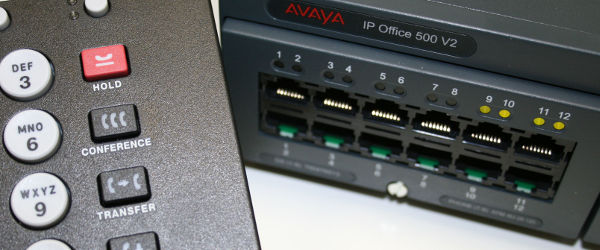
I am behind schedule in posting my blog article this month. We are quite busy at Teleco…it is a good problem to have…I have 12 IP Office systems currently on the bench getting ready to install in the next few weeks and a couple more that will need to be provisioned in the next week or two. So as you can imagine the bench is quite cluttered.

So far the techs have not complained too much that I am hoarding all the bench space. I left a little room for Rob to put his coffee down on the bench in the morning because…well …he is Rob. I have even resorted to moving a couple of systems off the main bench and onto a storage bench.

I am also busy collecting information from customers and programming the systems. There is quite a bit of work that needs to be completed on a system before it gets to the customer’s site.
Below is an outline of the provisioning phase of a phone system:
- System hardware arrives from the distributor and entered into our inventory;
- Licences are emailed from distributor;
- I grab the hardware;
- The SD card requires latest software installed on it….which takes about 20 minutes;
- Hardware is assembled;
- The SD card is inserted into the IP Office chassis and hardware is powered up. Firmware is copied to hardware from SD card automatically. This usually takes 10-15 minutes;
- System files that need to be uploaded to the SD card that are not included in the previous step need to be transferred. This takes about 20 minutes;
- A Mikrotik router is often sold with phone systems and takes about 20-30 minutes to program. This gives us remote access to a customer’s phone system via a secure VPN tunnel;
- If the customer purchases the IP Office Preferred Edition or other software that works in conjunction with the phone system, then a computer needs to be provisioned and software installed and configured;
- Once the phone system is ready some standard basic programming is completed;
- Phones are upgraded to match phone system firmware;
- The customer is emailed an Excel workbook that they complete. This includes user information and call flows. This is often followed up with a meeting to discuss options and answer questions;
- Once the information is collected then the programming takes place. This can take anywhere from 2 hours to … depending on the complexity and size of the phone system.
Installation on customer site follows.
So you can see there is a quite a bit of work required to make the installation smooth…and this is just the hardware and programming. I have not discussed all the work required by the installation team, sales team and admin team…since this is my blog…:)
